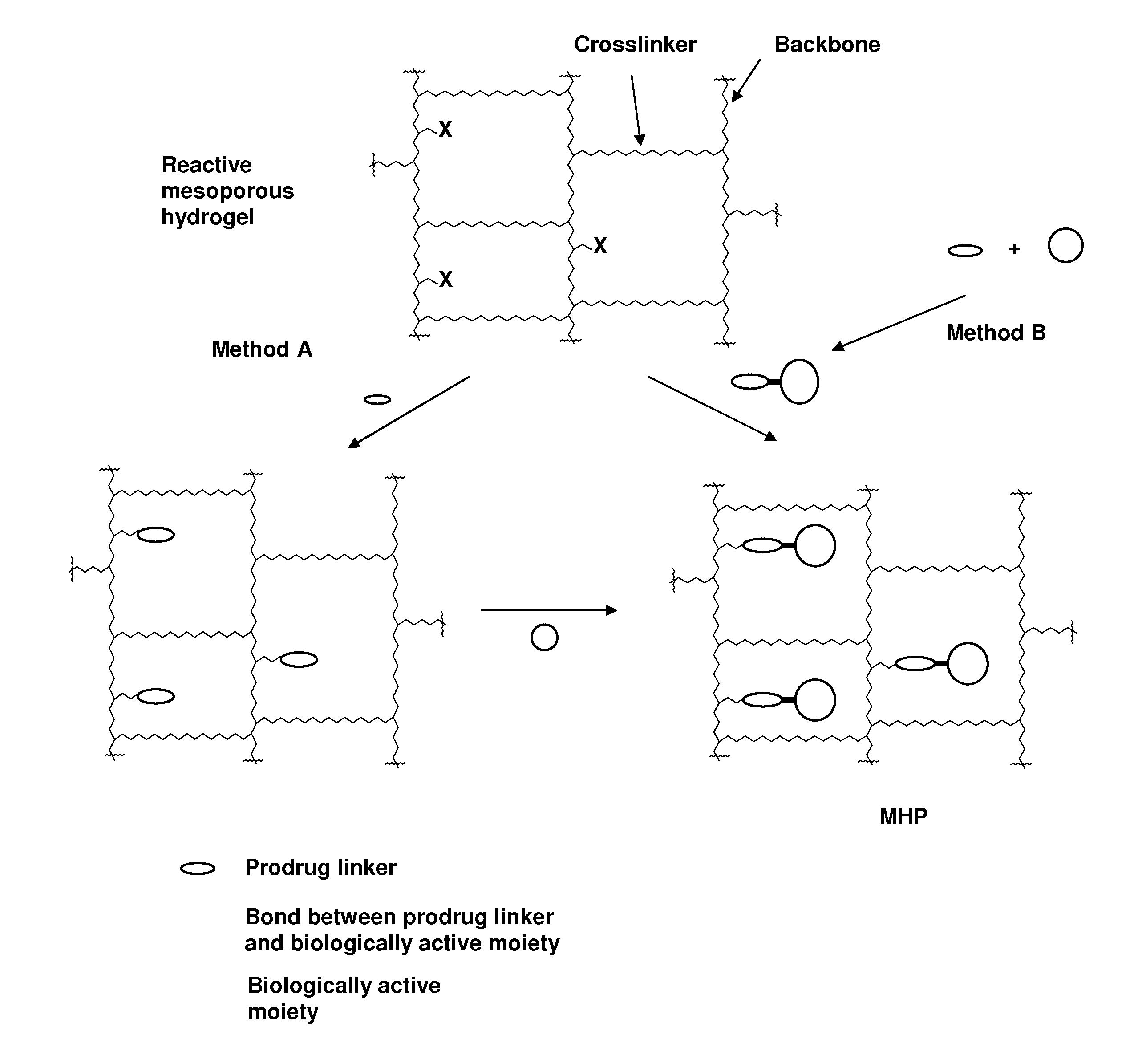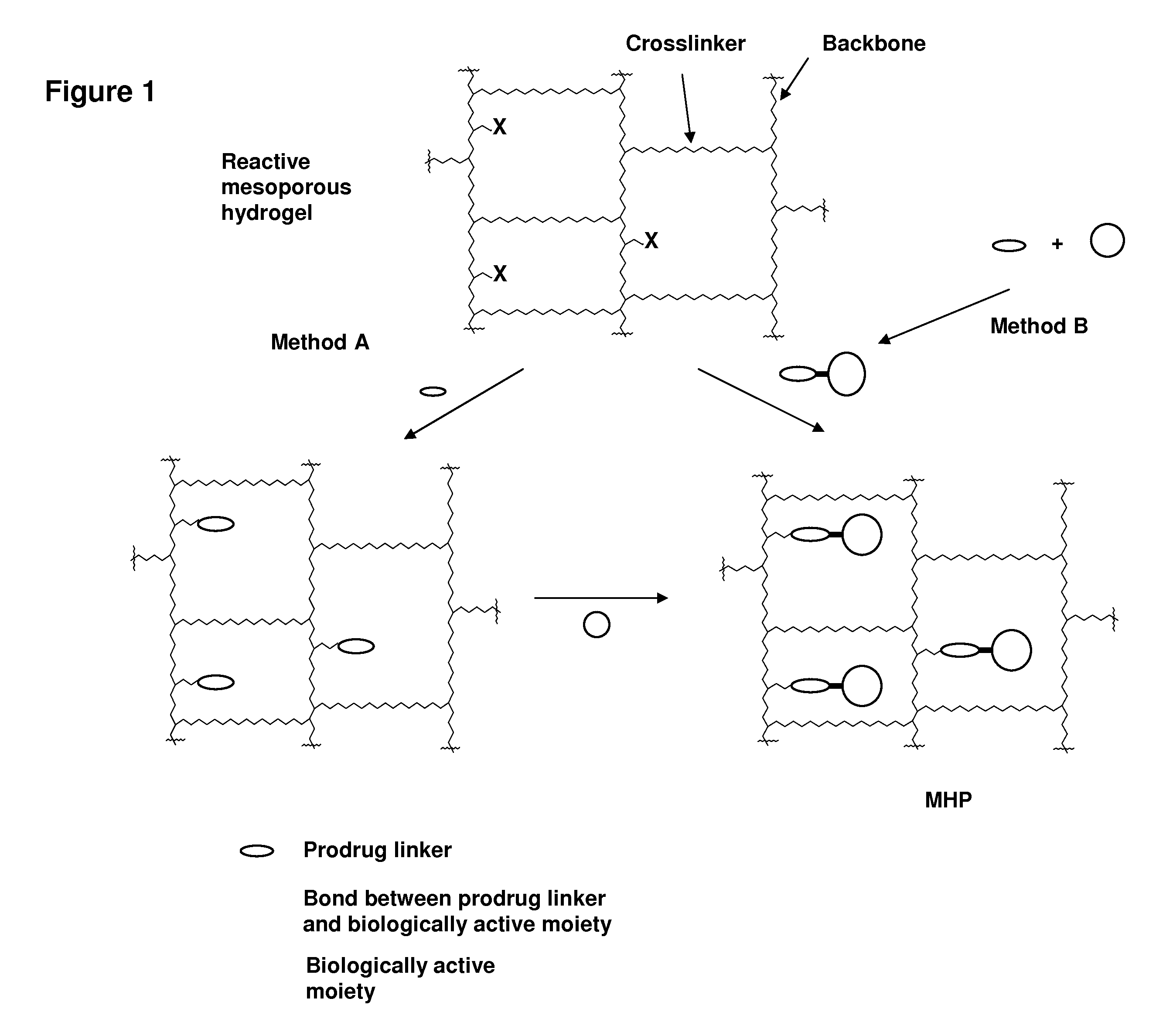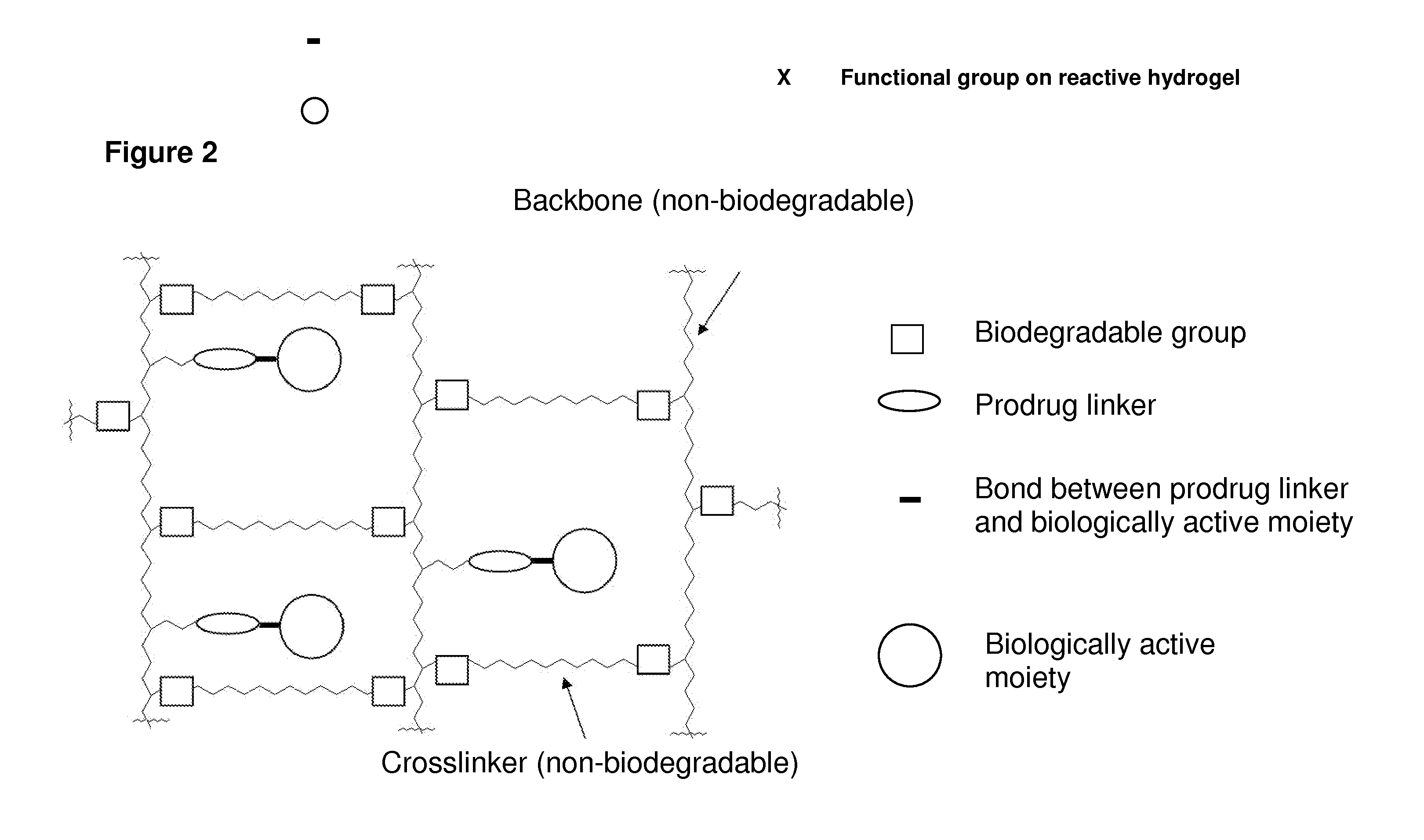Hydrogel formulations
a technology of hydrogel and depot, which is applied in the direction of antibody medical ingredients, peptide/protein ingredients, dna/rna fragmentation, etc., can solve the problems of difficult measurement of the size of the pores in self-assembled networks, difficult control of the quality of the end product, and inability to incorporate biologically active moiety into the hydrogel after
- Summary
- Abstract
- Description
- Claims
- Application Information
AI Technical Summary
Benefits of technology
Problems solved by technology
Method used
Image
Examples
examples
Maleimide Derivatization of Polyacrylamide Based Non-Biodegradable Reactive Mesoporous Hydrogel (Amino-PEGA)
[0104]
[0105]Non-biodegradable mesoporous NH2-PEGA hydrogel beads with 0.4 mmol / g loading and 150-300 μm bead size were purchased from Novabiochem. NH2-PEGA Versamatrix-800 hydrogel beads with 0.31 mmol / g loading and 80-100 μm bead size were obtained from Versamatrix (Denmark).
[0106]2.5 g methanol-wet NH2-PEGA-hydrogel (0.4 mmol / g NH2-loading) was weighed into a syringe equipped with a polypropylene frit. Maleimide loading was adjusted by acylation employing a mixture of activated maleimidopropionic acid and acetic acid as described in the following. The hydrogel was washed 5 times with DMF and reacted with 13.5 mg (0.08 mmol) 3-maleimidopropionic acid, 115.2 μl (1.92 mmol) acetic acid and 313 μl (2 mmol) DIC in 4 ml DMF for 30 min. The maleimide derivatized hydrogel 1a was washed 10 times with DMF and DCM and finally with acetonitrile.
[0107]Hydrogel 1b was synthesized followin...
PUM
 Login to View More
Login to View More Abstract
Description
Claims
Application Information
 Login to View More
Login to View More - R&D
- Intellectual Property
- Life Sciences
- Materials
- Tech Scout
- Unparalleled Data Quality
- Higher Quality Content
- 60% Fewer Hallucinations
Browse by: Latest US Patents, China's latest patents, Technical Efficacy Thesaurus, Application Domain, Technology Topic, Popular Technical Reports.
© 2025 PatSnap. All rights reserved.Legal|Privacy policy|Modern Slavery Act Transparency Statement|Sitemap|About US| Contact US: help@patsnap.com



